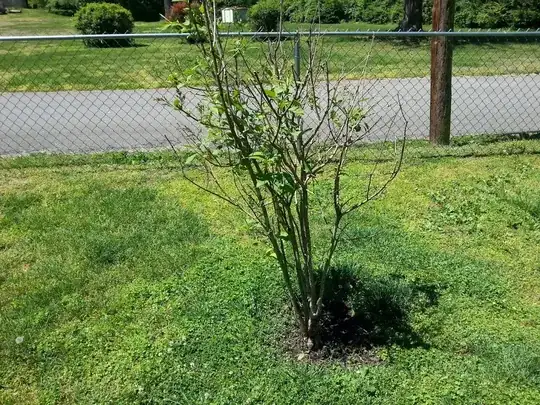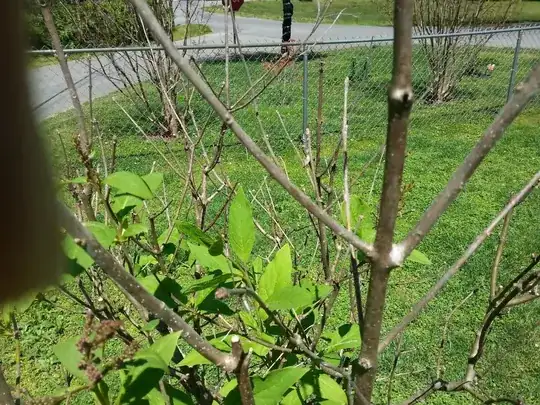I live in South East Tennessee. About 7 years ago I planted two Lilac bushes in my front yard. One is the regular purple kind, the other is called a French Lilac.
The purple one started to get too congested in the middle, so I cut out all the middle branches that looked dead. I also started getting Kudzu growing around it. This year it is doing better.
The French Lilac looks like half of it is dead and I don't know what to do. I planted both of these bushes the same year, but one is huge and the other is only half as tall as it was when I planted it. Maybe it is supposed to be that way?
I cut some of the branches down and the sucklings at the bottom. Now what?
It is planted in what became a low spot in my yard after having my yard dug up to have pipes from house to sewer replaced. They just filled in the yard and planted grass seed. It is no longer level. Could it be the drainage?
There is a greenish white spot where the stem meets the tree.


